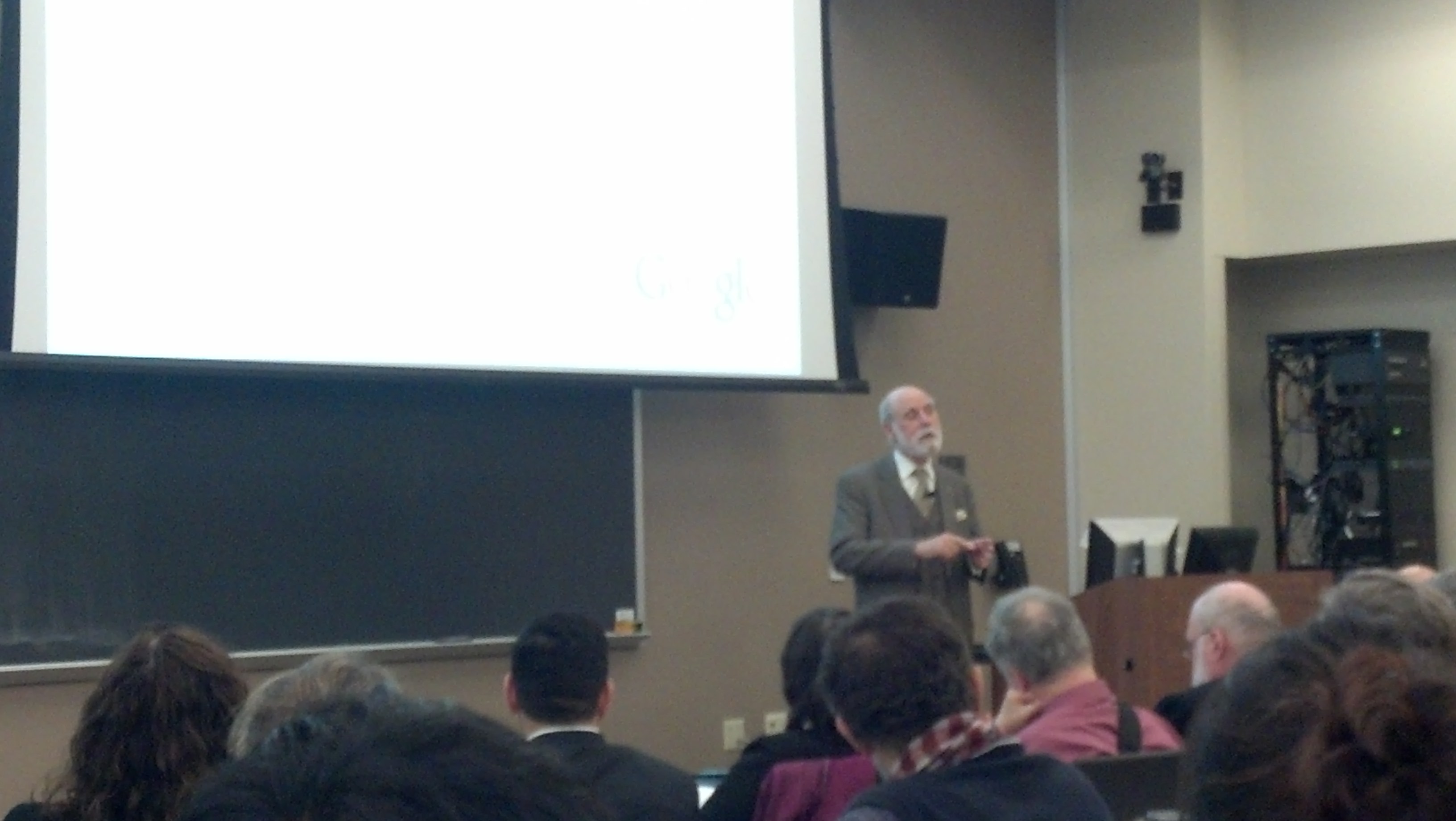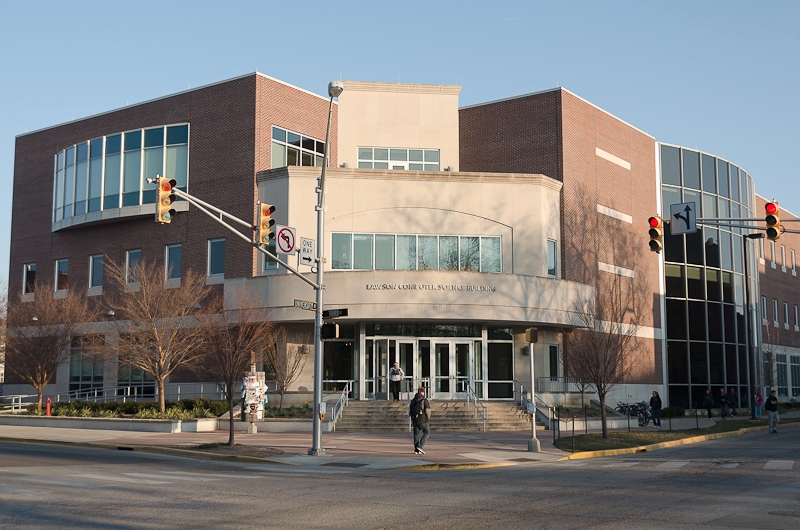 Background on my Vint Cerf at Purdue posting: I attended the celebration of the 50th anniversary of the founding of the Computer Science department at Purdue University. It was an excellent chance for me to see former professors, alumni and attend a day of presentations by distinguished lecturers, including Vint Cerf, on of the founders of the Internet.
Background on my Vint Cerf at Purdue posting: I attended the celebration of the 50th anniversary of the founding of the Computer Science department at Purdue University. It was an excellent chance for me to see former professors, alumni and attend a day of presentations by distinguished lecturers, including Vint Cerf, on of the founders of the Internet.
Vint Cerf at Purdue on “Political, Economic, Social and Technical (PEST) Impacts of the Internet”
 He told the story of how the Internet was founded. He very modestly discribed his role and shared a bunch of factoids on the growth of the Internet and some new initatives.
He told the story of how the Internet was founded. He very modestly discribed his role and shared a bunch of factoids on the growth of the Internet and some new initatives.
Some topics that caught my attention: IPv6, internationalization (UTF-8), new gTLD, DNSSec, Sensor Networks, Smart Grid, Mobile Devices, poisoned caches, routing system hijacking, a laptop integrated into a surf board (surfing while surfing), digital vellum, Openflow and content based routing, MOOC, etc.
Interplanetary Internet
[youtube http://www.youtube.com/watch?v=XTmYm3gMYOQ&w=300&h=180]
He was particularly excited telling his story behind interplanetary internet. He described the problem of transmitting a packet to Mars where the propagation distance can vary between 7-40 minutes of round trip delay, or even worse given that the planet rotates out of coverage once per Mars day. He described that space craft in the future will be designed to perform deep space network relaying for the benefit of follow on missions.
 He was particularly stuck by a meeting with a librarian who showed him a perfectly preserved manuscript from over a 1000 years ago. He was challenged to show them any computer-based storage technology that can hold its meaning for a 1000 years (let alone 10)! He said that Internet needs to create a Digital Vellum.
He was particularly stuck by a meeting with a librarian who showed him a perfectly preserved manuscript from over a 1000 years ago. He was challenged to show them any computer-based storage technology that can hold its meaning for a 1000 years (let alone 10)! He said that Internet needs to create a Digital Vellum.
Do Anything Differently?
A member of the audience asked what was wrong with the original Internet design and what he would do differently? The question was received with some laughter because it implied that Internet designer had done a less than perfect job, but in good spirit he answered: IP address space and security.
For IP addresses, they discussed number of countries, number of sites, and numbers of servers, based on creating something that mirrored the DARPA net. 32 bits was more than enough. They debated variable vs fixed length, and they decided that since the Internet was a research project that they could revisit the decision if they ever decided to productize the design.
For security, they had a whole nicely designed security solution worked-out with the military. It never got put into the Internet because noone had sufficient security clearance to know what the security architecture was going to be. Further, the original paper by Martin Hellmen, et al (Diffie-Hellmen Key Exchange) didn’t come out until the late 70s. If it had been around, they would have used it.
 Another question from a student in the audience: (paraphrasing) … if the internet is connected to your bathroom scale, your refrigerator and everything in your refrigerator is RFI tagged, then what’s to stop the government from locking your refrigerator if you weigh too much? This question was asked very sincerely. Vint gave a good answer that said this question has been asked since the beginning of the Industrial Revolution around how machines are taking over our lives. He referred the student to a 1909 book called “The Machine Stops,” by E. M. Forester.
Another question from a student in the audience: (paraphrasing) … if the internet is connected to your bathroom scale, your refrigerator and everything in your refrigerator is RFI tagged, then what’s to stop the government from locking your refrigerator if you weigh too much? This question was asked very sincerely. Vint gave a good answer that said this question has been asked since the beginning of the Industrial Revolution around how machines are taking over our lives. He referred the student to a 1909 book called “The Machine Stops,” by E. M. Forester.
Video of Vint Cerf at Purdue
[youtube http://www.youtube.com/watch?v=_-8lXXzQ1e8 ]
Purdue posted a nice introductory video of Vint’s presentation; it’s only the first 3 minutes. At some point, I’d like to get Vint’s ppt slides and maybe a pointer to his full presentation. I’ll post here if I can.
I was honored to sit at his table for dinner. We shared a brief conversation about Google’s Serge LaChapple and his WebRTC project. Vint was very excited about it.

Lawson Computer Science Building